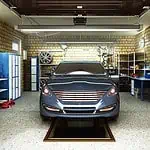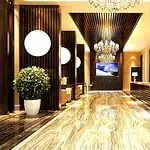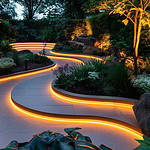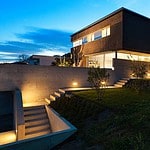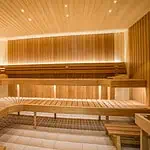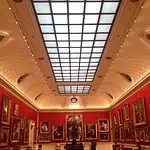Do you dream of having the perfect home theater? Imagine settling down for a movie night with the ideal ambiance, just like a real cinema. Home theater lighting is about more than just being able to see to get around; it’s about creating an entire viewing experience.
Why is proper lighting so important in a home theater environment? Well, proper lighting can take your movie nights to the next level and make them more enjoyable and immersive. It helps reduce eye strain, sets the mood, and can even add a little flair to your space.
This guide will take you step-by-step through everything you need to know about home theater lighting, from understanding the fundamentals and planning your layout, to selecting the right fixtures and tying them in with your AV systems. By the end, you’ll have all the information you need to create a home theater that’s as good as any you could pay for.
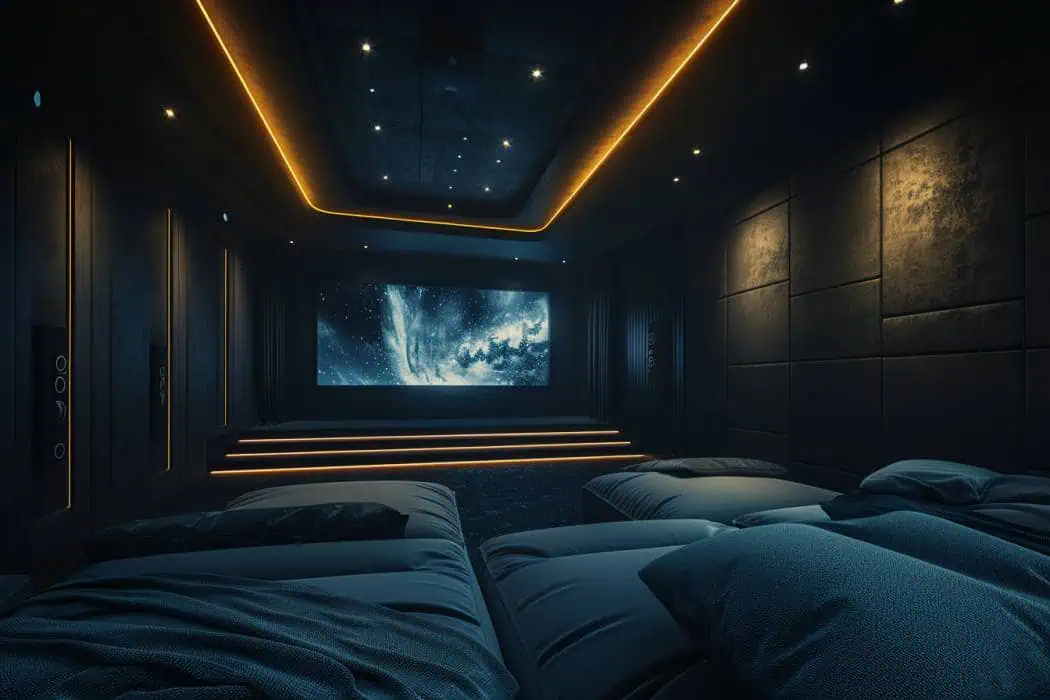
Why Do You Need Home Theater Lighting?
Completes The Viewing Experience
Think about the last time you watched a movie in a room that was too dark. It’s not just about being able to see the screen; it’s about feeling the scene. Proper home theater lighting makes you feel like you’re part of the action, which creates a level of immersion that’s tough to beat.
Safety
Have you ever stumbled around in the dark trying to find your seat? Good lighting allows you to navigate your home theater safely. Safety lighting prevents accidents so you and your guests can move around without tripping over things.
Personalized Space
Your home theater is your sanctuary. By customizing your lighting, you can make your space reflect your personality and style. Whether you prefer a cozy, intimate setting or a bright, lively environment, the right lighting allows you to make the space your own.
Blocks Natural Lights
One of the most significant challenges of creating a home theater is controlling natural light. You can use blackout curtains or shades, but if you have a well-thought-out lighting design, then you have the perfect conditions to watch a movie, no matter the time of day. This means no more annoying glares or washed-out screens.
Did You Know? The right lighting can reduce eye strain and make long viewing sessions more comfortable.
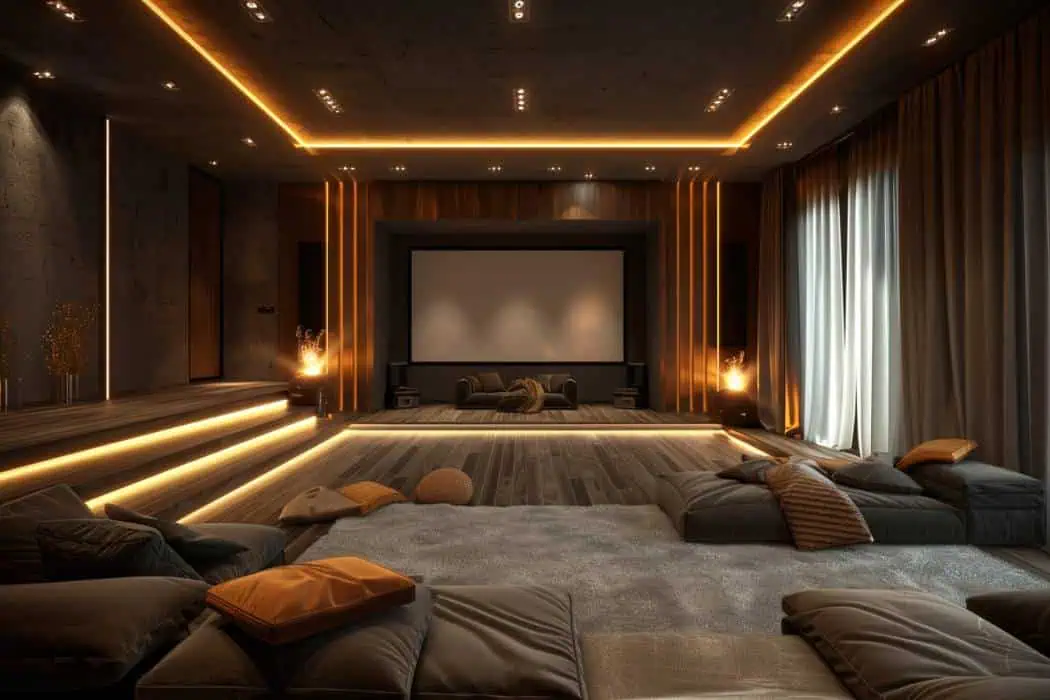
Understanding Home Theater Lighting
Basics Of Home Theater Lighting
Definition And Components
Home theater lighting is about creating the perfect environment for watching movies and TV shows using different types of lighting fixtures and technologies to enhance the viewing experience. The main parts include:
- Ambient Lighting: General lighting to illuminate the entire room.
- Task Lighting: Focused lighting for specific activities like reading.
- Accent Lighting: Decorative lighting that highlights features or sets the mood.
- Smart Lighting: Advanced lighting controlled via apps or voice commands.
- Safety Lighting: Lights to ensure safe movement in the room.
Role In Enhancing The Viewing Experience
It’s not just about being able to see; lighting plays a massive role in setting the mood and atmosphere of your home theater. The right lighting can help:
- Reduce glare and reflections: Preventing light from bouncing off the screen improves image quality.
- Create ambiance: Different colors and intensities help set the tone for different types of movies.
- Improve comfort: Proper lighting reduces eye strain and makes viewing more comfortable.
Types Of Lighting
Ambient Lighting
Ambient lighting provides the primary source of light in the room, important for general visibility. It can be created using:
- Ceiling lights
- Recessed lights
- LED strips
Task Lighting
Task lighting focuses on specific areas where activities take place. In a home theater, it might include:
- Floor lamps
- Table lamps
- Adjustable spotlights
Accent Lighting
Accent lighting adds depth and style to your home theater. It can highlight architectural features or add a decorative touch. Examples include:
- Wall sconces
- Track lighting
- Spotlights
Smart Lighting
Smart lighting systems offer flexibility and control, allowing you to adjust your lighting with ease. Options include:
- Smart bulbs
- Automated lighting systems
- Voice-controlled lighting
Safety Lighting
Safety lighting ensures you can navigate your home theater without tripping. This includes:
- Step lights
- Pathway lights
- Low-level lighting
Each type of lighting has a specific purpose, contributing to a full and immersive home theater experience.
Planning Your Home Theater Lighting
Assessing Your Space
Room Size And Shape
The size and shape of your room have a significant impact on your lighting plan. A larger room may need more light sources to ensure even illumination, while a smaller room might require carefully placed lights to avoid overwhelming the space. Think about the room’s dimensions and how light will move through it.
Existing Lighting Setup
Take stock of the existing lighting fixtures in your room. Do you have ceiling lights, floor lamps, or wall sconces in place? Understanding your current setup helps you decide what to keep, what to replace, and where to add new fixtures.
Windows And Natural Light
Windows can be a double-edged sword in a home theater. While natural light is welcome in other parts of the house, it can be a problem when watching a movie. Consider the amount of natural light that enters your space and plan for ways to control it, such as blackout curtains or blinds.
Designing The Lighting Layout
Key Lighting Zones
Divide your room into key lighting zones to ensure balanced illumination. These zones typically include:
- The seating area: Ensure viewers have comfortable lighting.
- The screen area: Avoid direct light on the screen to prevent glare.
- Pathways and entry points: Provide enough light for safe movement.
Balancing Light Sources
Getting the right balance between different light sources is essential. Mix ambient, task, and accent lighting to create a layered lighting effect. This approach ensures no single light source dominates, creating a more natural and comfortable ambiance.
Avoiding Glare And Reflections
Glare and reflections can spoil the viewing experience. Position your lights to prevent direct light on the screen. Use dimmers and adjustable fixtures to control light levels and angles, minimizing unwanted reflections.
Tip: Use a combination of recessed lights and wall sconces to create a balanced lighting setup that reduces glare and creates a cozy atmosphere.
Ambient Lighting Options
Recessed Lights
Recessed lights, also called can lights or downlights, are a popular choice for ambient lighting in home theaters. They provide even, unobtrusive illumination and can be strategically placed to avoid glare on the screen.
LED Strips
LED strips offer a versatile and energy-efficient solution for ambient lighting. They can be installed along the ceiling, under seats, or behind the screen to create a subtle glow that enhances the viewing experience without being distracting.
Cove Lighting
Cove lighting involves installing light fixtures in a recessed area of the ceiling, walls, or floor. This indirect lighting method creates a soft, diffused light that adds to the ambiance without creating harsh shadows or glare.
Task Lighting Options
Floor Lamps
Floor lamps are a flexible and stylish option for task lighting. They can be easily moved and adjusted to provide light where it’s needed most, such as next to seating areas for reading or other activities.
Table Lamps
Table lamps are another excellent task lighting solution, especially for side tables next to seats. They offer focused light for specific tasks without interfering with the overall ambiance of the room.
Adjustable Spotlights
Adjustable spotlights can be mounted on the ceiling or walls and directed where you need extra light. They are perfect for highlighting specific areas or objects, such as a popcorn machine or a display shelf.
Accent Lighting Options
Wall Sconces
Wall sconces add a touch of elegance and can serve as both accent and task lighting. They can be placed on either side of the screen or along the walls to create a dramatic effect.
Track Lighting
Track lighting consists of a series of lights mounted on a track, allowing you to adjust the position and direction of each light. This flexibility makes it ideal for accent lighting, highlighting artwork, or architectural features.
Spotlights
Spotlights can be used to highlight specific areas or objects in your home theater. They add depth and interest to the room by creating focal points.
Smart Lighting Solutions
Smart Bulbs
Smart bulbs can be controlled via an app or voice commands, allowing you to adjust the color, brightness, and timing of your lights. This makes it easy to create different lighting scenes for various activities, such as watching movies, gaming, or entertaining guests.
Automated Lighting Systems
Automated lighting systems integrate with your home automation setup, allowing you to control all your lights with a single interface. This can include scheduling, dimming, and syncing lights with your home theater system.
Voice-Controlled Lighting
Voice-controlled lighting adds convenience and a touch of futuristic flair to your home theater. Using devices like Amazon Alexa or Google Assistant, you can adjust your lighting without leaving your seat.
Safety Lighting Solutions
Step Lights
Step lights are a must-have for safely navigating your home theater in the dark. They can be installed along stairs or pathways to illuminate the way without being too bright.
Pathway Lights
Pathway lights guide the way to seats and exits, ensuring everyone can move around safely. These can be integrated into the floor or along walls to provide subtle illumination.
Low-Level Lighting
Low-level lighting, such as lights installed under seats or along the baseboards, helps prevent trips and falls by providing just enough light to see without disrupting the viewing experience.
Pro Tip: When selecting lighting fixtures, consider energy-efficient options like LEDs to save on electricity bills and reduce heat generation in your home theater.
DIY vs. Professional Installation
Pros And Cons
DIY Installation: – Pros: Cost savings, the ability to customize, and a fun project to tackle. – Cons: Requires technical knowledge, time-consuming, and the potential to make mistakes that could affect the overall setup.
Professional Installation: – Pros: Ensures optimal setup and performance, saves time, and includes expert advice. – Cons: Higher cost, less personal involvement, and potential scheduling hassles.
Cost Considerations
While DIY installation can save money upfront, professional installation may be worth the investment for complex setups or if you lack the necessary skills. Take into account your budget, the complexity of your lighting plan, and your comfort level with electrical work.
Wiring And Electrical Safety
Basic Wiring Guidelines
- Turn off the power: Always make sure the power is off at the breaker before you start any electrical work.
- Use the right tools: Make sure you have the right tools, such as wire strippers, screwdrivers, and voltage testers.
- Follow instructions: Follow the manufacturer’s instructions for all lighting fixtures and electrical components.
Safety Tips
- Check local codes: Make sure your installation complies with local building and electrical codes.
- Avoid overloading circuits: Calculate the load on your circuits to prevent overheating and potential hazards.
- Seek help if needed: If you’re unsure about any part of the wiring process, don’t hesitate to consult a professional.
Positioning Your Lights
Optimal Placement For Different Types Of Lighting
- Ambient Lighting: Place recessed lights evenly across the ceiling to ensure even illumination. Avoid placing them directly above the screen to prevent glare.
- Task Lighting: Place floor and table lamps near seating areas where activities like reading might occur.
- Accent Lighting: Use wall sconces and spotlights to highlight architectural features or décor elements without shining directly on the screen.
Tips For Even Light Distribution
- Use dimmers: Dimmers allow you to adjust the light levels for different activities, ensuring a comfortable viewing experience.
- Layer your lighting: Layering different types of lighting (ambient, task, accent) helps you create a balanced and versatile lighting setup.
- Experiment with angles: Adjust the angles of spotlights and track lights to minimize shadows and reflections.
Remember: Proper positioning of lights can enhance the viewing experience by reducing eye strain and creating the right ambiance for movie nights.
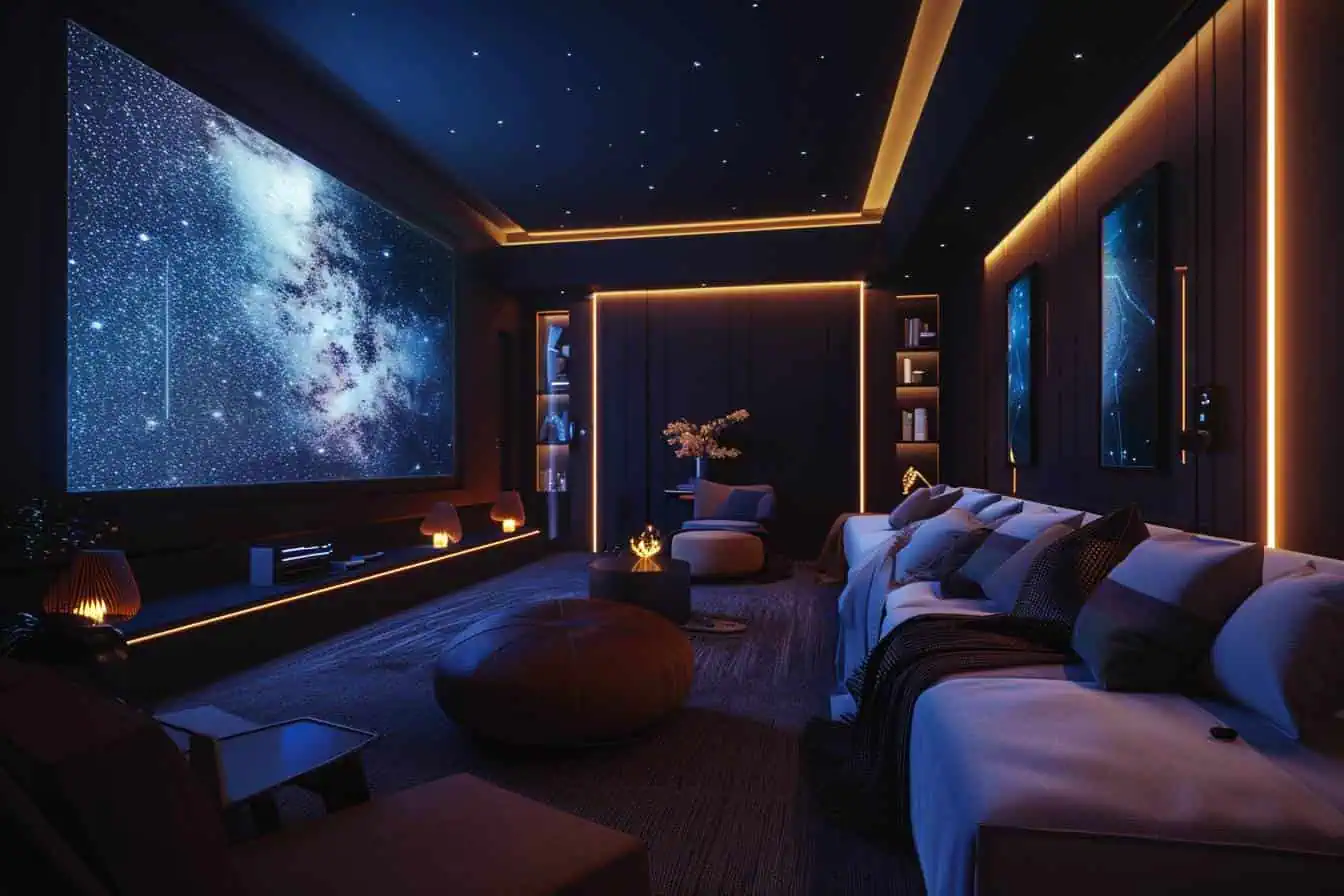
Integrating Lighting With Home Theater Systems
Syncing Lighting With AV Equipment
Using AV Receivers And Controllers
AV receivers and controllers can act as the central hub for integrating your lighting with your home theater system. They let you sync your lighting with your audio and video equipment, creating an immersive experience. Look for receivers that support HDMI-CEC (Consumer Electronics Control) or similar protocols to control multiple devices with a single remote.
Integrating With Smart Home Systems
Smart home systems like Amazon Alexa, Google Home, or Apple HomeKit can be used to control your home theater lighting. They offer compatibility with a variety of smart bulbs and switches, allowing you to create scenes and schedules that enhance your viewing experience. For example, you can set up a command like “Alexa, start movie night” to dim the lights and start your movie simultaneously.
Creating Lighting Scenes
Pre-set Lighting Modes
Pre-set lighting modes allow you to quickly change the lighting based on your activity. Common modes might include:
- Movie Mode: Dims the lights and enhances the contrast for a cinematic feel.
- Gaming Mode: Adjusts the lights to reduce screen glare and improve focus.
- Party Mode: Activates dynamic lighting effects for a lively atmosphere.
Customizable Lighting Scenes
Customizable scenes let you tailor the lighting to your personal preferences. Using your smart home app, you can adjust brightness, color temperature, and even individual light settings to create the perfect ambiance. For example:
- Relaxation Scene: Soft, warm lighting that helps you unwind after a long day.
- Reading Scene: Focused light on seating areas with reduced background illumination.
Pro Tip: Experiment with different scenes to find what works best for various activities and moods. Smart lighting systems often allow you to save and name your custom scenes for easy access.
Enhancing The Viewing Experience
Reducing Eye Strain
Optimal Brightness Levels
Making sure your lighting is not too bright or too dim is essential for reducing eye strain. Use dimmable lights to adjust the brightness according to the time of day and the content you are watching. Soft, indirect lighting is ideal for home theaters as it provides enough illumination without causing glare or reflections.
Using Bias Lighting
Bias lighting involves placing a light source behind the TV or screen, creating a subtle glow that reduces the contrast between the bright screen and the dark room. This helps to ease eye strain and improve perceived picture quality. LED strips are perfect for bias lighting as they can be easily installed and adjusted.
Creating Ambiance
Color Temperature And Mood
The color temperature of your lights can have a significant impact on the ambiance of your home theater. Warm colors (2700K-3000K) create a cozy, inviting atmosphere, while cooler colors (5000K-6500K) can make the room feel more energetic and lively. Adjustable RGB lights can also add a dynamic element, allowing you to change colors based on the movie genre or your mood.
Dynamic Lighting Effects
Dynamic lighting effects, such as slowly dimming the lights when the movie starts or using color-changing lights to match the on-screen action, can greatly enhance the viewing experience. Smart lighting systems often include these features, allowing you to create a more immersive environment.
Practical Tips For Optimal Viewing
Adjusting Lights For Different Activities
Different activities in your home theater may require different lighting setups. For example:
- Watching Movies: Use dim ambient lighting with bias lighting behind the screen.
- Gaming: Ensure there is enough task lighting to reduce glare and improve focus.
- Entertaining Guests: Brighten the room with accent lighting to highlight décor and create a welcoming atmosphere.
Maintaining The Lighting Setup
Regular maintenance is essential to keep your lighting system in top condition. Check and replace bulbs as needed, clean fixtures to ensure maximum brightness, and periodically review your setup to make sure it still meets your needs.
Did You Know? Properly maintained lighting can enhance both the aesthetics and functionality of your home theater, making every movie night special.
Maintenance And Upkeep
Regular Maintenance Tips
Cleaning And Dusting Fixtures
Regular cleaning ensures that your lighting fixtures perform optimally and last longer. Dust and dirt can accumulate on light fixtures, reducing their brightness and efficiency. Here’s how to keep them clean:
- Dust regularly: Use a soft cloth or duster to remove dust from light fixtures.
- Clean lenses and covers: Wipe down any glass or plastic covers with a damp cloth and mild detergent.
- Check for damage: Inspect fixtures for any signs of wear or damage and replace as necessary.
Checking And Replacing Bulbs
Light bulbs can dim over time or burn out completely. Regularly check your bulbs and replace them as needed to maintain consistent lighting quality. Consider upgrading to energy-efficient LED bulbs, which have a longer lifespan and lower energy consumption.
Troubleshooting Common Issues
Flickering Lights
Flickering lights can be a nuisance and may indicate a problem with your electrical system. Common causes include:
- Loose connections: Ensure all connections are tight and secure.
- Faulty bulbs: Replace bulbs to see if the issue persists.
- Voltage fluctuations: Consult an electrician if you suspect an issue with your home’s electrical supply.
Dim Lights
If your lights seem dimmer than usual, it could be due to several factors:
- Dirty fixtures: Clean your light fixtures to improve brightness.
- Old bulbs: Replace aging bulbs with new, energy-efficient ones.
- Inadequate power: Ensure your lighting system is receiving sufficient power. If necessary, consult an electrician.
Pro Tip: Regular maintenance not only prolongs the life of your lighting system but also ensures a consistent and enjoyable viewing experience.
Creative Lighting Tips To Enhance Your Home Cinema Atmosphere
- Control Your Lighting From Phone
- Use smart lighting apps to control your home theater lighting from your phone. This convenience allows you to create the perfect ambiance without getting up from your seat.
- Install LED Strips Behind Your Screen
- Installing LED strips behind your screen can reduce eye strain and add a cool, modern look to your setup. Bias lighting creates a balanced viewing experience by reducing the contrast between the screen and the surrounding room.
- Create A Starry Night Sky
- Add a touch of magic to your home theater with a fiber optic ceiling. This creates the illusion of a starry night sky, adding an enchanting element to your movie nights.
- Opt For The Dimmable Option
- Dimmable lights offer flexibility, allowing you to adjust the brightness to suit different activities. This feature is particularly useful in a home theater where you might need different light levels for watching movies, playing games, or entertaining guests.
- Use Light Diffusers
- Light diffusers help spread light evenly across your home theater, reducing harsh shadows and glare. They can be used with various types of lighting fixtures to create a soft, pleasant ambiance.
Fun Fact: Light diffusers can also enhance the colors and clarity of your on-screen images by minimizing direct glare.
FAQs
The best type of lighting for a home theater includes a mix of ambient, task, and accent lighting. Smart lighting systems also offer flexibility and control, enhancing the overall experience.
To reduce glare, avoid placing lights directly above or in front of the screen. Use dimmable lights and bias lighting behind the screen to balance the brightness.
Bias lighting reduces eye strain by creating a balanced contrast between the bright screen and the dark room. It also enhances the perceived picture quality.
Yes, you can install home theater lighting yourself if you have basic electrical knowledge. However, for complex setups or to ensure safety, it may be best to hire a professional.
Smart lighting allows you to control the lights via an app or voice commands, create customizable scenes, and sync lighting with your home theater system for an immersive experience.
Warm colors (2700K-3000K) create a cozy atmosphere, while cooler colors (5000K-6500K) can energize the room. Adjustable RGB lights offer the flexibility to change colors based on your mood or activity.
Accent lighting highlights architectural features or décor elements, adding depth and style to your home theater. It can also create focal points and enhance the overall ambiance.
Regular maintenance, such as cleaning fixtures and replacing bulbs, should be done every few months to ensure optimal performance and longevity of your lighting setup.
Creative ideas include using LED strips behind the screen, creating a starry night sky effect with fiber optics, incorporating dimmable lights, and using light diffusers to spread light evenly.
Absolutely. Proper lighting can reduce eye strain, enhance picture quality, and create the perfect ambiance, making your home theater experience more enjoyable and immersive.
Conclusion
Proper lighting is crucial for creating the ultimate home theater experience. By carefully planning and selecting the right fixtures, you can enhance your viewing pleasure, reduce eye strain, and add a touch of personal style to your space. Remember to regularly maintain your lighting setup to ensure it continues to perform at its best. Whether you’re watching a blockbuster movie, playing video games, or simply relaxing, the right lighting can make all the difference. So go ahead, experiment with different lighting options, and create a home theater that truly shines.


